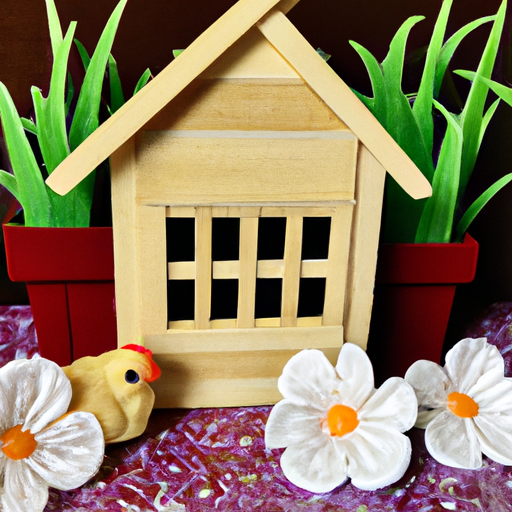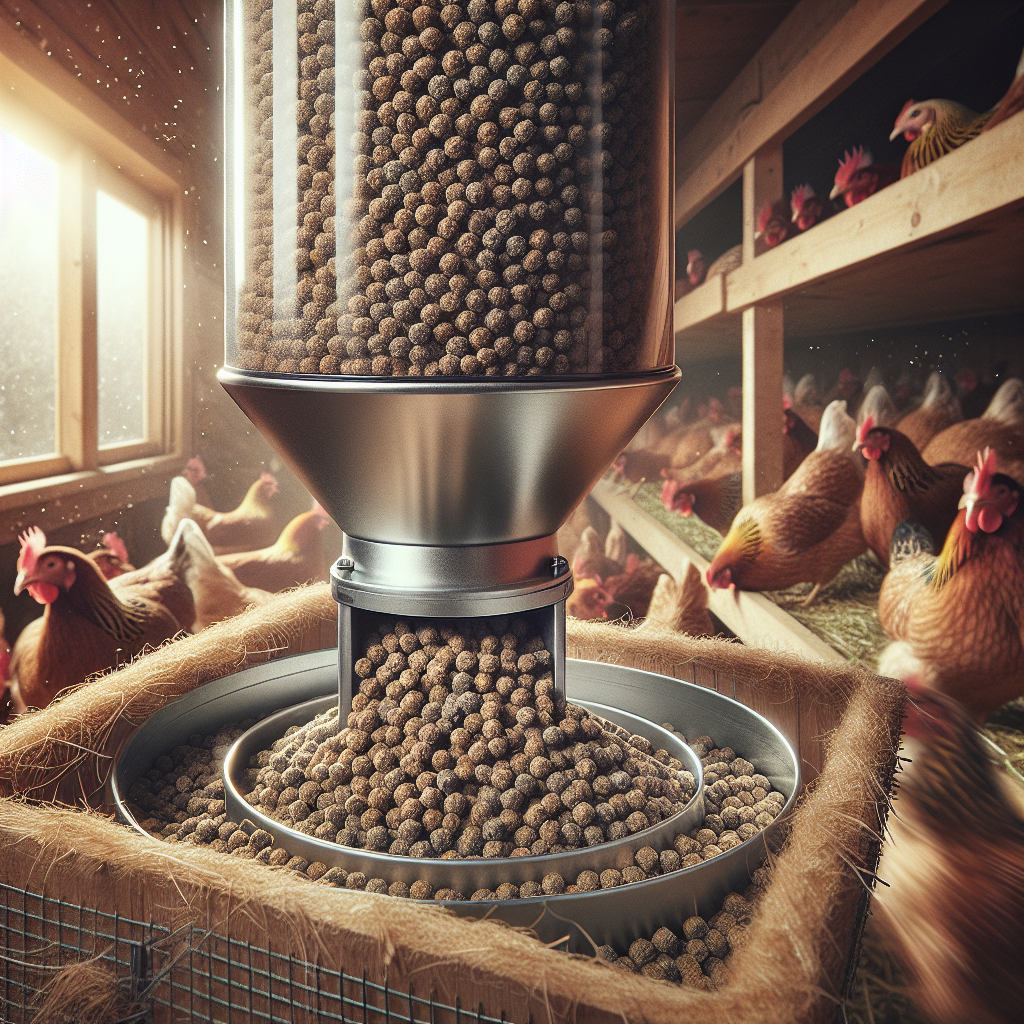If you’re a proud chicken owner looking to create the ultimate sanctuary for your feathered friends, incorporating natural elements into your coop design is a must. Not only will it enhance their overall comfort, but it will also provide them with a sense of harmony and well-being. From the soothing sound of a running water feature to the greenery of plants and flowers, there are numerous ways to create a natural oasis within your chicken coop. By doing so, you’ll not only be providing your chickens with a more natural environment, but you’ll also create a beautiful and serene space that you can enjoy as well.
Roofing Material
Benefits of using natural roofing materials
When it comes to designing a chicken coop, choosing the right roofing material is important for various reasons. By opting for natural roofing materials, you can reap a multitude of benefits. Firstly, natural roofing materials such as thatch, cedar shakes, or clay tiles provide excellent insulation, keeping your chickens warm in the winter and cool in the summer. Additionally, these materials are durable and long-lasting, ensuring that your coop remains protected from the elements for years to come. Moreover, using natural roofing materials can add a charming and rustic aesthetic to your chicken coop, blending seamlessly with the surrounding environment.
Options for natural roofing materials
There are several options to consider when selecting natural roofing materials for your chicken coop. Thatch, made from dry vegetation like straw or reeds, is a traditional and eco-friendly choice. Cedar shakes, known for their natural resistance to decay and insects, are another popular option. Lastly, clay tiles not only provide excellent insulation but also offer an attractive and timeless appearance. Each of these materials has its own unique qualities, so consider your climate, budget, and desired aesthetic when making your decision.
Considerations when using natural roofing materials
While natural roofing materials offer numerous advantages, there are a few factors to keep in mind. Firstly, consider the weight of the material and ensure that your coop’s structure can support it adequately. Secondly, the cost of natural roofing materials may be higher compared to conventional options, but the long-term benefits often outweigh the initial investment. Lastly, consider the maintenance requirements of each material. Thatch may require occasional repair and replacement, while cedar shakes and clay tiles are generally low-maintenance. Evaluate these considerations to make an informed decision that best suits your needs.
Ventilation
Importance of proper ventilation in a chicken coop
Proper ventilation is crucial in maintaining a healthy and comfortable environment for your chickens. Adequate airflow helps remove excess moisture, reduce ammonia odor, and prevent the buildup of harmful gases like carbon dioxide. Optimal ventilation also assists in regulating temperature and humidity levels, promoting better respiratory health and preventing the growth of mold or mildew. By incorporating natural ventilation methods into your chicken coop design, you can ensure the well-being and longevity of your flock.
Natural ventilation options
There are various natural ventilation options to consider when designing your chicken coop. Start by positioning windows or vents strategically to allow for cross ventilation. This means placing openings on opposite sides of the coop to facilitate the flow of fresh air. Another option is to incorporate ridge vents or gable vents to facilitate the escape of warm air, especially in warmer climates. Additionally, utilizing high vents near the roofline can help eliminate excess heat and improve air circulation. By taking advantage of these natural ventilation methods, you can create a comfortable and well-ventilated coop.
Positioning of windows and vents for optimal airflow
To ensure optimal airflow in your chicken coop, it’s essential to consider the positioning of windows and vents. Windows should be placed above chickens’ eye level to prevent drafts, while vents can be positioned near the roofline or closer to the floor. By placing vents higher up, warm air can escape, while positioning vents lower enhances air circulation. Additionally, ensure that the total ventilation area is approximately 10% of the floor area to achieve proper air exchange. Taking these factors into account will promote healthy airflow and improve the overall well-being of your chickens.
Flooring
Benefits of natural flooring
When it comes to the flooring of your chicken coop, natural materials offer numerous advantages. One significant benefit is providing a more comfortable and natural surface for your chickens to walk on. Natural flooring materials, such as straw, wood shavings, or even sand, have a softer and more forgiving texture compared to concrete or wire mesh. This can reduce the chances of foot injuries or discomfort for your flock. Additionally, natural flooring materials absorb moisture efficiently, keeping the coop clean and dry.
Types of natural flooring materials
There are several natural flooring options to consider for your chicken coop. Straw is a popular choice as it is readily available, affordable, and provides excellent insulation. Wood shavings or chips are another option that not only offers comfort but also absorbs moisture effectively. Sand is a great choice for coops with proper drainage systems, as it is easy to clean and provides a natural substrate for chickens to dust bathe in. Assess your specific needs and the availability of materials in your area to choose the best natural flooring for your coop.
Proper installation and maintenance of natural flooring
To ensure the durability and effectiveness of natural flooring materials, proper installation and maintenance are crucial. For straw or wood shavings, ensure a thick layer is spread evenly across the coop’s floor, replenishing it periodically as needed. Regularly rake or stir the material to maintain cleanliness and freshness. Sand should be laid over a leveled and compacted base, providing a depth of at least 2 inches. It should be sifted regularly to remove waste and replaced periodically to maintain cleanliness. By following these installation and maintenance practices, you can maximize the benefits of natural flooring materials in your chicken coop.
Wall Insulation
Importance of insulation in a chicken coop
Insulating the walls of your chicken coop is vital to ensure a comfortable and consistent environment for your flock. Proper insulation helps regulate temperature extremes, keeping your chickens warm during winter and cool during summer. It also prevents drafts, minimizes condensation, and reduces the risk of respiratory issues. Insulation plays a crucial role in energy efficiency, ensuring that heating or cooling efforts are not wasted. By utilizing natural insulation options, you can create a cozy and efficient environment for your chickens.
Natural insulation options
When it comes to natural insulation options, there are several choices to consider. Straw bales or hay can be stacked against the walls to provide excellent insulation while also serving as a barrier against drafts. Wood shavings or wood fiber boards are another alternative that offers both insulation and durability. Additionally, recycled denim insulation, made from shredded denim fibers, provides a sustainable and effective option. Evaluate the availability and affordability of these materials in your area to make an informed decision for your chicken coop.
Factors to consider when choosing natural insulation
When choosing natural insulation for your chicken coop, there are a few factors to keep in mind. Consider the R-value, which measures the insulation’s thermal resistance. A higher R-value indicates better insulation. Additionally, assess the fire resistance and moisture resistance properties of potential insulation materials. It is crucial to select materials that are safe and will not promote the growth of mold or mildew. Lastly, consider the environmental impact and sustainability of the insulation option. By evaluating these factors, you can select the best natural insulation for your coop.
Natural Light
Benefits of natural light in a chicken coop
Providing ample natural light in your chicken coop offers numerous benefits for both the chickens and the overall environment. Natural light helps regulate the chickens’ circadian rhythm, promoting healthier sleep patterns and overall well-being. It also enhances vision, allowing your chickens to navigate the coop more easily and reducing the chance of accidents. Additionally, exposure to natural light can improve the quality of eggs produced by your hens. By incorporating natural light into your coop design, you can create a comfortable and productive space for your feathered friends.
Placement of windows and skylights for optimal natural light
To maximize natural light in your chicken coop, strategic placement of windows and skylights is essential. Windows should be positioned on the south or east-facing walls to ensure optimal sunlight exposure throughout the day. Skylights can be incorporated in the roof to provide additional light from above, especially in the center of the coop. Consider the surrounding landscape and potential obstructions that may cast shadows on the coop to determine the most effective placement. By taking these factors into account, you can ensure your chickens receive adequate natural light throughout the day.
Using curtains or blinds to control natural light exposure
While natural light is essential, it’s also important to have the ability to control the amount and intensity of sunlight entering the coop. Using curtains or blinds offers a practical solution to regulate natural light exposure. By installing curtains or blinds on the windows, you can adjust the level of sunlight entering the coop according to the season or time of day. This helps prevent overheating in the summer or excessive brightness during early mornings. Having the flexibility to control natural light exposure ensures a comfortable and adaptable environment for your chickens.
Roosting Perches
Benefits of natural roosting perches
Natural roosting perches in a chicken coop offer several advantages for your feathered flock. Firstly, natural materials such as branches or logs provide a more comfortable and secure resting place for your chickens. These materials mimic their natural environment and give them a sense of safety and comfort. Additionally, natural roosting perches promote foot health by allowing chickens to exercise their feet and strengthen their muscles. They also contribute to overall coop aesthetics, giving your chickens a more natural and fulfilling living space.
Types of natural materials for roosting perches
There are various natural materials suitable for roosting perches in your chicken coop. Branches or logs of different diameters provide uneven surfaces for your chickens to perch on, strengthening their feet and reducing the risk of foot problems. Bamboo poles are another option that offers durability and adds an exotic touch to the coop design. Additionally, repurposed wooden ladders can serve as multi-level roosting perches, providing different heights and spaces for your chickens to choose from. Choose materials that are safe, sturdy, and appropriate for the size and breed of your chickens.
Installing roosting perches for comfort and safety
When installing roosting perches in your chicken coop, there are a few considerations for comfort and safety. Ensure that the perches are firmly secured to prevent wobbling or collapsing under the weight of your chickens. Install the perches at varying heights to accommodate the different preferences and sizes of your flock. Allow sufficient space between perches to prevent overcrowding and disputes between chickens. Additionally, position the perches away from windows or entryways to avoid drafts and potential injuries. By following these installation guidelines, you can create a safe and comfortable resting area for your chickens.
Nesting Boxes
Advantages of natural nesting boxes
Natural nesting boxes offer several advantages for your chickens’ egg-laying and overall well-being. Firstly, using natural materials such as straw, hay, or wood shavings in nesting boxes provides a comfortable and familiar surface for your hens to lay their eggs. These materials mimic the natural environment and promote a sense of security and comfort. Additionally, natural nesting boxes are more breathable and absorbent, reducing the chances of egg breakage or bacteria growth. They also contribute to the overall aesthetic of the coop and create a relaxing atmosphere for your chickens.
Different types of natural materials for nesting boxes
There are various natural materials suitable for creating nesting boxes in your chicken coop. Straw or hay is a common choice due to its affordability, availability, and soft texture. Wood shavings or chips offer a more absorbent option and can help maintain a clean and dry nesting area. Alternatively, you can use natural fibers such as hemp or coconut coir, which provide excellent moisture absorption and durability. Assess the availability and suitability of these materials in your area to choose the best option for your nesting boxes.
Design considerations for comfortable and functional nesting boxes
When designing nesting boxes for your chicken coop, consider several factors to ensure comfort and functionality. Provide sufficient space for each nesting box, ensuring at least one box per 4-5 hens to prevent overcrowding. Incorporate a slight slope in the nesting box floor to encourage eggs to roll away from the hens, reducing the risk of breakage. Ensure the boxes are easily accessible for cleaning and egg collection, with a hinged lid or removable panels. Lastly, position the nesting boxes in a quiet and secluded area to offer privacy and reduce stress for your hens. By considering these design aspects, you can create comfortable and functional nesting boxes for your flock.
Dust Bath Area
Importance of a dust bath area for chickens
Providing a dust bath area for your chickens is essential for their overall health and well-being. Dust bathing is a natural behavior in chickens where they roll around in dust or loose materials to clean their feathers and regulate body temperature. Dust baths help control external parasites like mites or lice, preventing infestations in your flock. They also provide a source of enrichment and entertainment for your chickens, reducing stress and promoting natural behaviors. By creating a suitable dust bath area, you can ensure your chickens have a clean and enjoyable space to indulge in this important activity.
Natural materials for a dust bath area
When creating a dust bath area for your chickens, natural materials are the key to success. Chickens prefer loose, dry, and fine-grained materials that allow them to easily coat their feathers. Sandy soil or builders’ sand is an excellent choice, as it is absorbent and helps remove excess oils and dirt from feathers. Wood ash or diatomaceous earth can be added to the mix for their natural pest-repellent properties. Consider mixing these materials in a separate area of your coop, ensuring easy access for your chickens to enjoy their dust baths.
Creating a suitable and inviting dust bath area
To create a suitable and inviting dust bath area, consider the location and size of the space. Choose an area that is sheltered from wind and rain, yet receives enough sunlight to dry out the materials after a dust bath. The size of the area will depend on the number of chickens you have, but make sure it is large enough for them to roll around comfortably without feeling crowded. Ensure the materials are at least 4 inches deep to allow adequate dust distribution. Regularly replenish and maintain the area to keep it clean and inviting for your chickens to enjoy.
Predator Protection
Using natural elements for predator protection
Protecting your chickens from predators is a crucial aspect of coop design. By incorporating natural elements into your coop and its surroundings, you can enhance the security of your flock. For example, strategically placed thorny bushes or prickly shrubs can create a barrier that deters predators from approaching the coop. Additionally, natural landscaping features such as large rocks or fallen logs can create hiding spots for your chickens to seek refuge. By utilizing these natural elements, you can add an extra layer of protection to your chicken coop.
Integration of plants and landscape for added security
Integrating plants and landscape design into your chicken coop area can offer additional security for your flock. Planting dense shrubs or hedges around the perimeter of the coop creates a physical barrier that can deter larger predators. Consider using plants with thorns or prickly leaves to further discourage unwanted visitors. Additionally, planting tall grasses or creating tall grassy areas near the coop can provide cover and concealment for your chickens. These natural elements not only enhance the security of your coop but also contribute to the overall aesthetics of the surrounding environment.
Methods for deterring predators naturally
In addition to natural elements, there are various methods for deterring predators naturally. For instance, implementing motion-activated lights or sound devices can startle and deter nocturnal predators. Installing a sturdy fence or wire mesh buried in the ground can help prevent digging predators from accessing the coop. Another effective deterrent is the presence of a guard animal, such as a well-trained dog or a domesticated goose, which can alert and ward off potential threats. Consider these methods and evaluate the specific predator risks in your area to determine the most effective natural deterrents for your chicken coop.
Sustainable Materials
Using sustainable materials in chicken coop construction
Incorporating sustainable materials into your chicken coop construction offers numerous benefits for the environment and your chickens. Sustainable materials are often made from renewable resources, reducing the strain on finite resources. By using these materials, you contribute to the conservation of natural habitats and the reduction of greenhouse gas emissions. Additionally, sustainable materials tend to have lower toxin levels and lower energy consumption during the manufacturing process. By prioritizing sustainable materials in your coop construction, you can create an eco-friendly and responsible living space for your chickens.
Benefits of sustainable materials for the environment and chickens
Using sustainable materials in your chicken coop provides several benefits for the environment and your flock. Firstly, sustainable materials minimize waste and reduce the carbon footprint associated with conventional construction. They also promote responsible forestry, as many sustainable materials are sourced from certified forests that prioritize reforestation and biodiversity conservation. Additionally, sustainable materials are often more durable and long-lasting, reducing the need for frequent replacements and minimizing waste generation. By choosing sustainable materials, you are making a positive impact on both the environment and the well-being of your chickens.
Options for sustainable materials and their proper usage
There are a range of sustainable materials available for chicken coop construction. One option is reclaimed or recycled wood, which reduces the demand for new timber and repurposes materials that would otherwise go to waste. Bamboo is another excellent choice, as it is a rapidly renewable resource that requires minimal pesticides or fertilizers. Metal roofing made from recycled materials is durable and energy-efficient. Along with sustainable materials, it is important to consider proper usage and maintenance. Regularly inspecting and maintaining your coop will help prolong its lifespan and ensure its sustainability. By selecting and utilizing sustainable materials responsibly, you can create a truly eco-friendly chicken coop.




